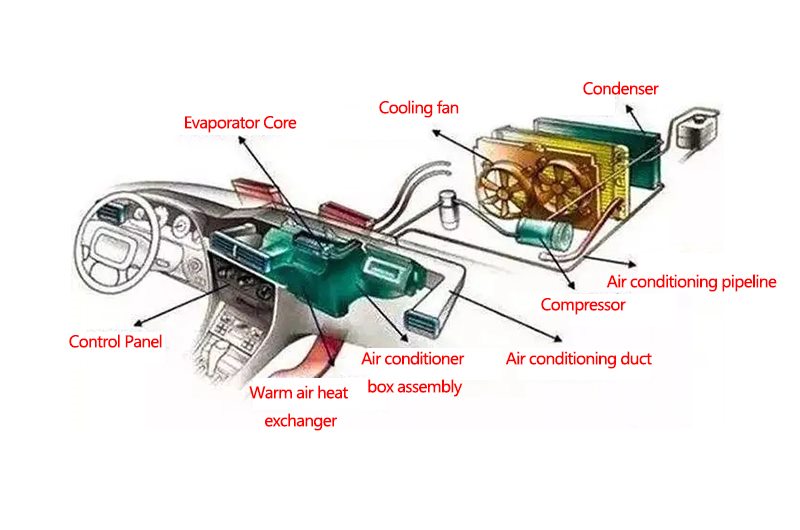Aluminum alloy is light in weight, rich in resources and low in price, and has become the preferred material for lightweight automobiles. As an important part of the car, the radiator begins to be gradually made of aluminum to achieve the dual purpose of reducing the weight of the car and reducing the cost....
Introduction of Corrosion Behavior of Aluminum Brazing Sheets for Automotive Heat Exchangers
Aluminum alloy is light in weight, rich in resources and low in price, and has become the preferred material for lightweight automobiles. As an important part of the car, the radiator begins to be gradually made of aluminum to achieve the dual purpose of reducing the weight of the car and reducing the cost. In order to ensure the processing performance of the heat exchanger in the brazing environment and the produced heat exchanger to play a reliable role, the brazed aluminum foil for automotive heat exchangers must have high strength, good sag resistance and thermal conductivity, as well as certain Corrosion resistance. The composite aluminum alloy brazing foil can meet the comprehensive performance and multi-function requirements such as light weight, corrosion resistance, good thermal conductivity, high strength, good formability, brazing, and saving precious metals. Most of the composite brazing aluminum foils currently produced are three-layered, and the core materials used are mainly Al-Mn alloys. For the cladding material, it is required to have a lower melting point, good fluidity and filling properties and excellent brazing properties, so it is mainly an Al-Si alloy material. Most of the aluminum alloy composite foils are double-coated with 4xxx series alloys (skin materials) on 3xxx series alloys (core materials).
During brazing, the aluminum alloy clad plate is heated to between 848-878K, and the Al-Si alloy with a lower melting point melt, and flows to the joint gap through capillary motion under the action of surface tension, gravity and other effects, infiltration and expansion. As the surface temperature decreases, the solder solidifies, eventually forming a brazed joint. During high temperature brazing, the molten skin material will flow through the base metal, and there must be an interaction between the skin material and the core material. During the brazing process, the liquid skin material continuously advances from the surface to the inside in the form of a liquid film in the core material, changing the composition distribution in the core material, forming a second-phase-free area and a precipitation-concentrated area. In addition, soluble residues including chlorides, bromides, and oxides will remain after brazing, and they are prone to electrochemical corrosion along the interface, that is, the difference between the Al matrix (anodic) and the coarse Si particles (cathodic). Inter-corrosion, which seriously affects the corrosion resistance of composite brazing aluminum foil.
Influence of 4343/Mod3Z23/4343 multilayer aluminum brazing sheets on corrosion resistance for Automotive Heat Exchangers
- The high temperature (460°C) final annealing significantly improves the brazing ability of the 4343/Mod3Z23/4343 multilayer aluminum sheet, and eliminates the erosion of the core layer during the brazing process.
- During the brazing process, Si diffuses from the cladding to the core, and Cu diffuses from the core to the cladding. After brazing, Si/Cu segregates on the surface of the skin.
- The segregation of Si/Cu on the surface of the composite layer after brazing leads to an increase of 25MV in the open circuit corrosion potential of the aluminum plate.
- In SWAAT, the main corrosion mechanism of unbrazed materials is pitting corrosion, while the main corrosion mechanism of brazed materials is intergranular corrosion.
- The corrosion resistance of four-layer gradient composite brazing aluminum with high corrosion resistance is layer-by-layer peeling corrosion, and its corrosion resistance is much higher than that of ordinary composite brazing aluminum.

















